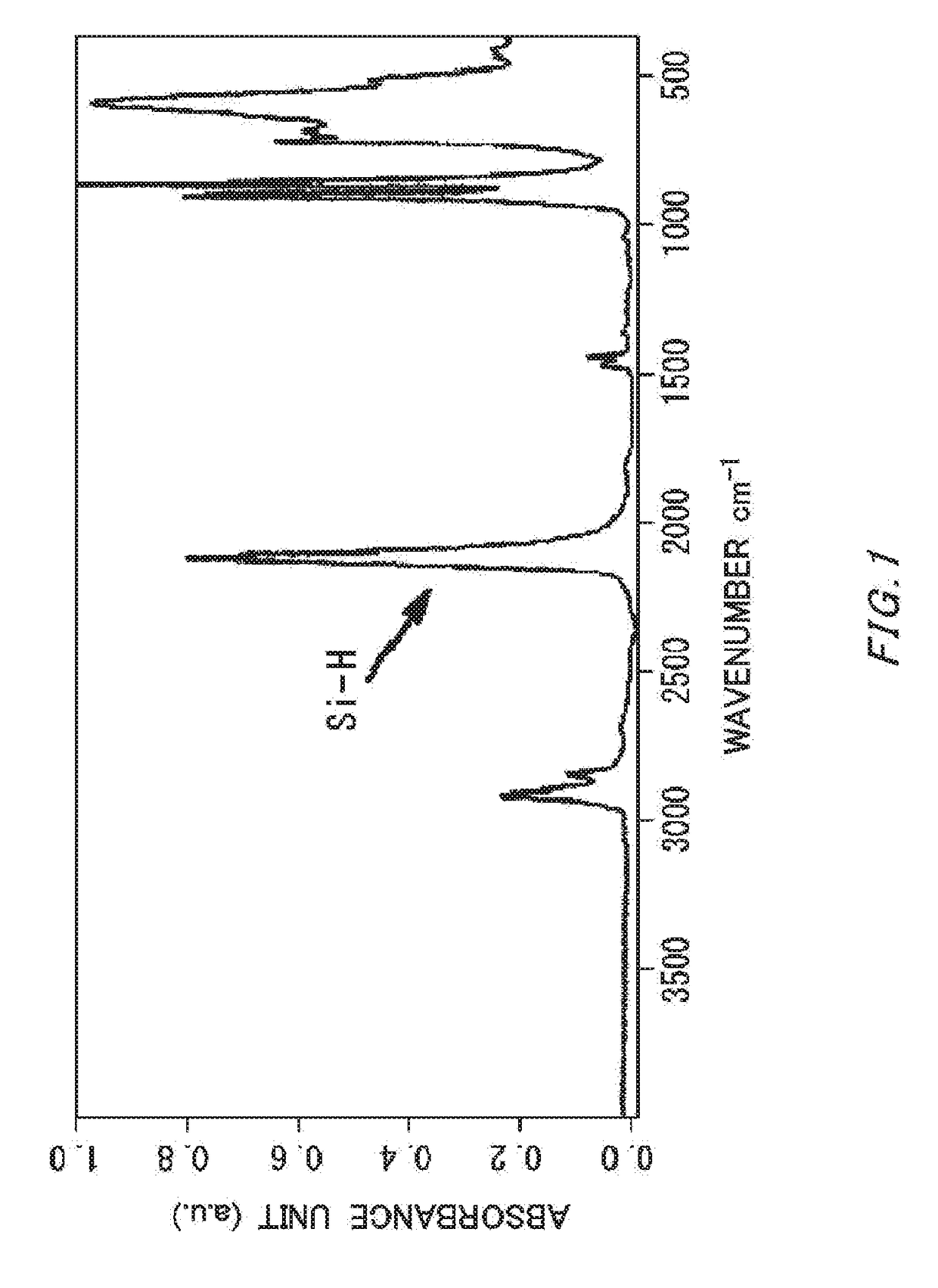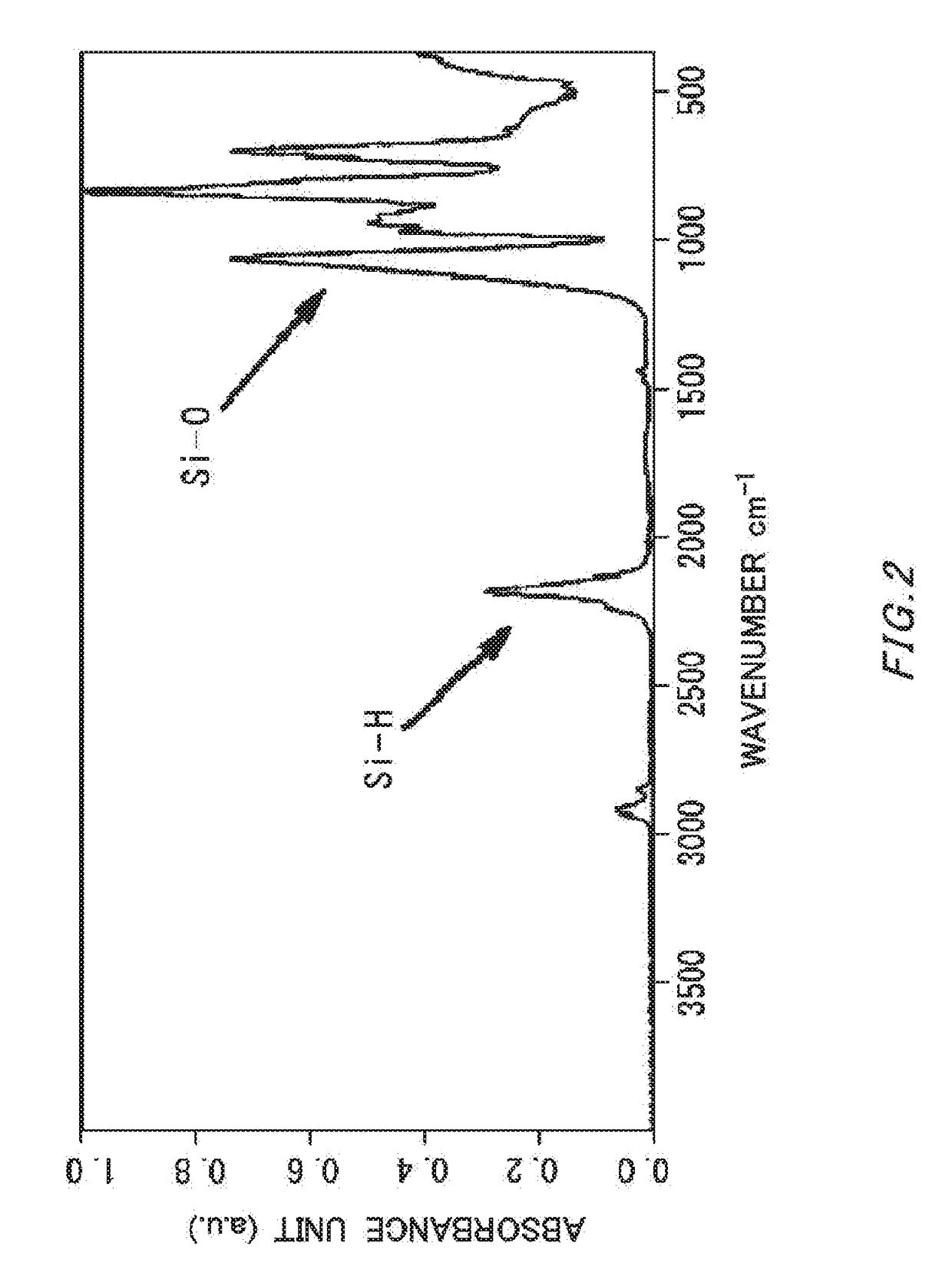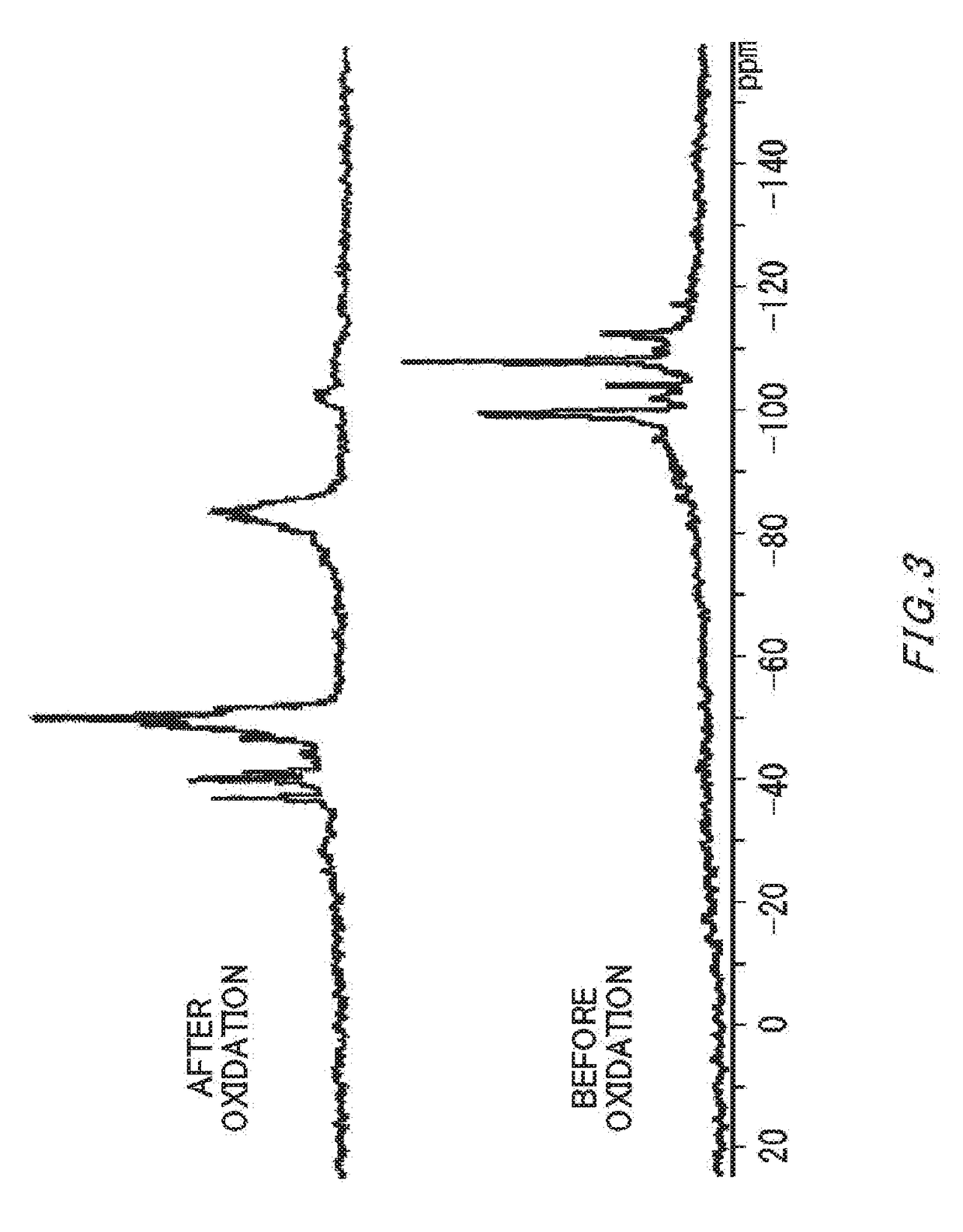Method of Producing Silicon Hydride Oxide-Containing Organic Solvent
a technology of organic solvent and silicon hydride oxide, which is applied in the direction of silicon oxides, metal/metal-oxide/metal-hydroxide catalysts, physical/chemical process catalysts, etc., can solve the problems of difficult handling of raw materials and gaseous materials, and achieve the effects of low oxidation purity, difficult oxidation of silane compounds, and considerable damage to substrates
- Summary
- Abstract
- Description
- Claims
- Application Information
AI Technical Summary
Benefits of technology
Problems solved by technology
Method used
Image
Examples
examples
[0051]The weight-average molecular weight can be measured by gel permeation chromatography (GPC) (measurement equipment: HLC-8320GPC (manufactured by Tosoh Corporation); column: GPC / SEC (PLgel 3 μm, 300×7.5 mm, manufactured by Varian Inc.); column temperature: 35° C.; detector: RI; flow rate: 1.0 ml / minute; measurement time: 15 minutes; eluent: cyclohexane; injection amount: 10 μL); sample concentration: 1.0% (in cyclohexane). Also, with CPS (Mw150, RT=11.040 minutes), CPS-dimer (Mw298, RT=10.525 minutes) and CPS-Trimer (Mw446, RT=9.725 minutes) as primary standards, a calibration curve was generated. Si—H % was defined in the following manner using the peak at 2100 cm−1 as Si—H and the peak at 1100 cm−1 as Si—O by IR measurement. Calculation performed was: Si—H %=(integrated value of Si—H) / (integrated value of Si-H+integrated value of Si—O)×100. IR analysis was performed after removing a solvent by concentration.
[Synthesis Example 1] Synthesis of Decachlorocyclopentasilane
[0052]In ...
synthesis example 3
[Synthesis Example 3] Synthesis of Rh Black
[0054]In nitrogen atmosphere, a rhodium chloride n hydrate (1.00 g), ammonium carbonate (0.48 g) and ion-exchanged water (482 ml) were put into a 1-L reaction flask. Then, the temperature was raised from room temperature to 90° C. over 30 minutes. A hydrazine n hydrate (9.65 ml) was added and the resultant mixture was agitated at 90° C. for 25 minutes. Thereafter, the temperature was lowered to a temperature no greater than 30° C. while agitation was being performed, and the solution was allowed to stand still overnight to precipitate Rhblack. After 400 ml of the supernatant was fractionated, the remaining portions were separated from water by a centrifugal separator (2000 rpm), and were moved into a flask and dried in vacuum overnight. The dried Rhblack (rhodium black) was ground down in a mortar made of agate, and the amount of the obtained Rhblack was 0.45 g.
[Synthesis Example 4] Synthesis of Cyclopentasilane Polymer
[0055]In argon atmosp...
example 1
[0056]In argon atmosphere, the cyclopentasilane polymer (4.0 g) obtained in Synthesis Example 4 was dissolved in cyclohexane / cyclooctane (weight ratio: 95 / 5, 96.0 g), and a solution of 4% by mass was prepared. High-purity air was blown on a cyclohexane / cyclooctane solution (20.0 g) containing this cyclopentasilane polymer in the amount of 4% by mass at 100 ml / minute for six hours, and the solution was oxidized. The IR charts before and after oxidation are shown in FIG. 1 (before oxidation) and FIG. 2 (after oxidation). The obtained solution was colorless and transparent, and IR measurement performed showed that the amount of Si—H groups remaining in the polymer after oxidation was 25.3 mol % relative to Si—H groups remaining in the polymer before oxidation. The 29Si-NMR spectrums before and after oxidation are shown in FIG. 3.
PUM
| Property | Measurement | Unit |
|---|---|---|
| metallic | aaaaa | aaaaa |
| heat-resistant | aaaaa | aaaaa |
| oxidation purity | aaaaa | aaaaa |
Abstract
Description
Claims
Application Information
 Login to View More
Login to View More - R&D
- Intellectual Property
- Life Sciences
- Materials
- Tech Scout
- Unparalleled Data Quality
- Higher Quality Content
- 60% Fewer Hallucinations
Browse by: Latest US Patents, China's latest patents, Technical Efficacy Thesaurus, Application Domain, Technology Topic, Popular Technical Reports.
© 2025 PatSnap. All rights reserved.Legal|Privacy policy|Modern Slavery Act Transparency Statement|Sitemap|About US| Contact US: help@patsnap.com



